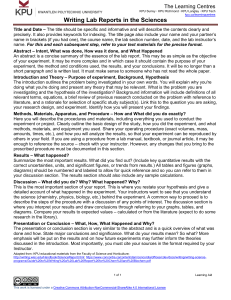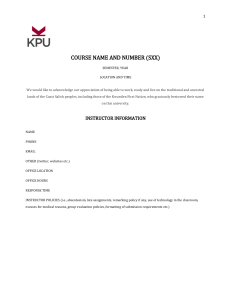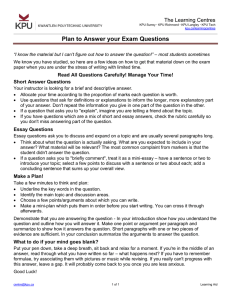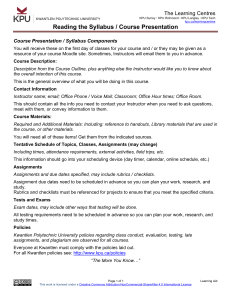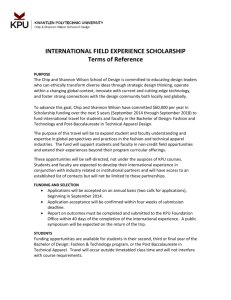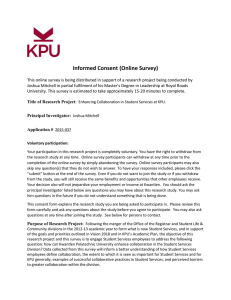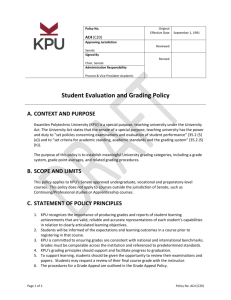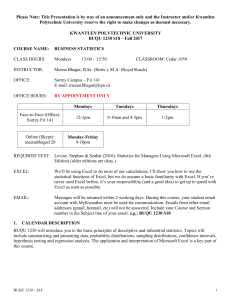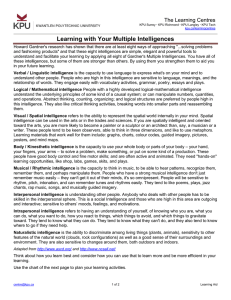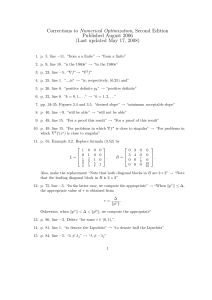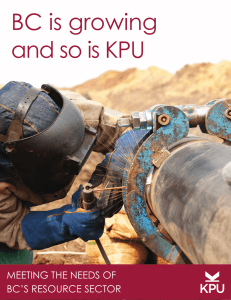Writing Lab Reports in the Sciences
advertisement
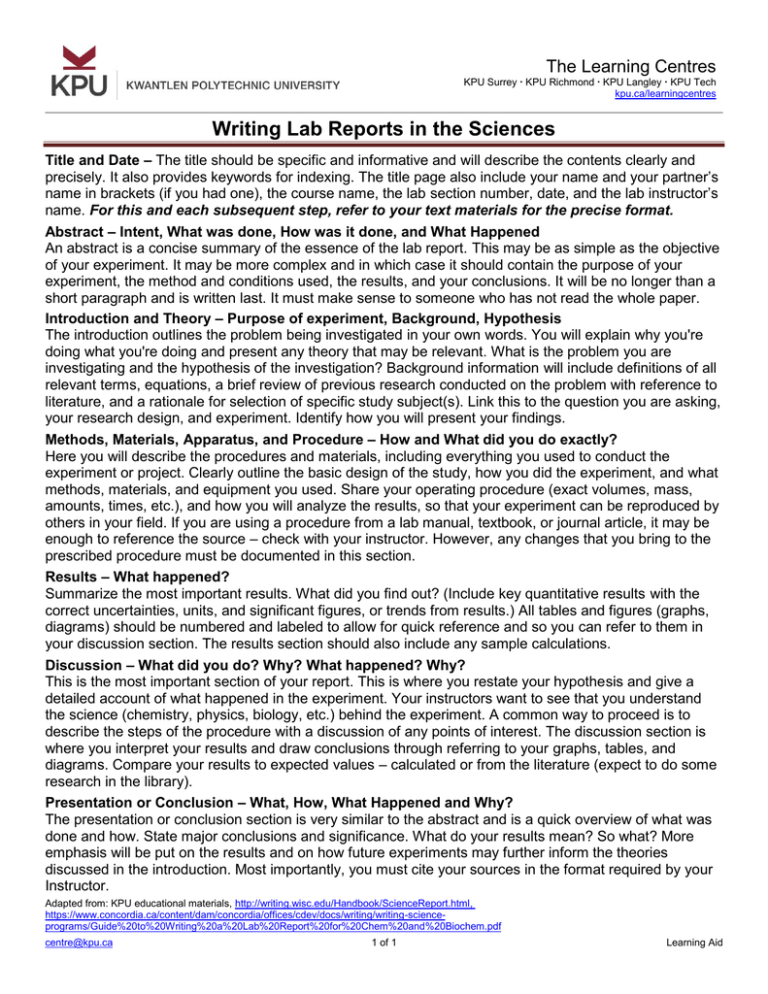
The Learning Centres KPU Surrey KPU Richmond KPU Langley KPU Tech kpu.ca/learningcentres Writing Lab Reports in the Sciences Title and Date – The title should be specific and informative and will describe the contents clearly and precisely. It also provides keywords for indexing. The title page also include your name and your partner’s name in brackets (if you had one), the course name, the lab section number, date, and the lab instructor’s name. For this and each subsequent step, refer to your text materials for the precise format. Abstract – Intent, What was done, How was it done, and What Happened An abstract is a concise summary of the essence of the lab report. This may be as simple as the objective of your experiment. It may be more complex and in which case it should contain the purpose of your experiment, the method and conditions used, the results, and your conclusions. It will be no longer than a short paragraph and is written last. It must make sense to someone who has not read the whole paper. Introduction and Theory – Purpose of experiment, Background, Hypothesis The introduction outlines the problem being investigated in your own words. You will explain why you're doing what you're doing and present any theory that may be relevant. What is the problem you are investigating and the hypothesis of the investigation? Background information will include definitions of all relevant terms, equations, a brief review of previous research conducted on the problem with reference to literature, and a rationale for selection of specific study subject(s). Link this to the question you are asking, your research design, and experiment. Identify how you will present your findings. Methods, Materials, Apparatus, and Procedure – How and What did you do exactly? Here you will describe the procedures and materials, including everything you used to conduct the experiment or project. Clearly outline the basic design of the study, how you did the experiment, and what methods, materials, and equipment you used. Share your operating procedure (exact volumes, mass, amounts, times, etc.), and how you will analyze the results, so that your experiment can be reproduced by others in your field. If you are using a procedure from a lab manual, textbook, or journal article, it may be enough to reference the source – check with your instructor. However, any changes that you bring to the prescribed procedure must be documented in this section. Results – What happened? Summarize the most important results. What did you find out? (Include key quantitative results with the correct uncertainties, units, and significant figures, or trends from results.) All tables and figures (graphs, diagrams) should be numbered and labeled to allow for quick reference and so you can refer to them in your discussion section. The results section should also include any sample calculations. Discussion – What did you do? Why? What happened? Why? This is the most important section of your report. This is where you restate your hypothesis and give a detailed account of what happened in the experiment. Your instructors want to see that you understand the science (chemistry, physics, biology, etc.) behind the experiment. A common way to proceed is to describe the steps of the procedure with a discussion of any points of interest. The discussion section is where you interpret your results and draw conclusions through referring to your graphs, tables, and diagrams. Compare your results to expected values – calculated or from the literature (expect to do some research in the library). Presentation or Conclusion – What, How, What Happened and Why? The presentation or conclusion section is very similar to the abstract and is a quick overview of what was done and how. State major conclusions and significance. What do your results mean? So what? More emphasis will be put on the results and on how future experiments may further inform the theories discussed in the introduction. Most importantly, you must cite your sources in the format required by your Instructor. Adapted from: KPU educational materials, http://writing.wisc.edu/Handbook/ScienceReport.html, https://www.concordia.ca/content/dam/concordia/offices/cdev/docs/writing/writing-scienceprograms/Guide%20to%20Writing%20a%20Lab%20Report%20for%20Chem%20and%20Biochem.pdf centre@kpu.ca 1 of 1 Learning Aid
